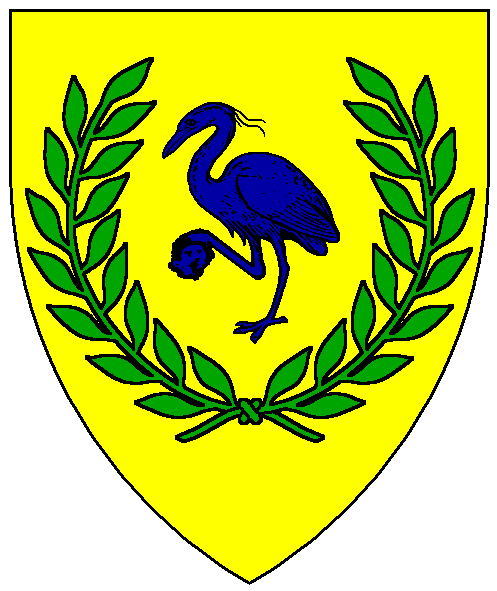
As much as I love creating handouts and handbooks, there are about a million wonderful handouts already out there for those who want to get into calligraphy and illumination. The purpose of this short handout and this class is just to get one pointed in the right direction towards all those pre-existing resources. So, here goes!
There are many good reasons to be a scribe! Scribes are great people. Scribes bring great joy to others. The scribal arts are a great way to serve your Kingdom. Scribes can produce beautiful things! The list could go on forever, but the punch line is: "Give the scribal arts a try. It is fun".
Now, many people can be overheard saying: "I couldn't be scribe. I have no artistic talent." This is almost never true. For one thing, there are many different styles of scrolls. The skills that one uses to draw a Celtic knotwork is not necessarily the same as that which is needed to draw a portrait or an acanthus border, and is certainly different from that needed to do the calligraphy. Similarly, there are many aspects of creating a scroll besides the drawing ? one may draw, paint, or lay gold leaf to produce a scroll. Some artists contribute by creating "scrolls" in stained glass, wood, metal, fabric, or other media.
For those who wish to begin in the scribal arts, here are a few hints to get started.
While it is possible to become a scribe without much help, that is definitely the hard way to do things! There are many resources available to the beginning scribe. Your Kingdom Sylvan Signet can help you get started, although there may be a source much closer. If your group has a local guild or even a local scribe, contact them for help.
The following is a list of materials to keep in a scribal toolbox. Items marked with bold print are critical. In many cases, there are multiple options, use what you like and what you can afford.
*Be careful not to buy pages from merchants who rip apart intact books for resale. This ruins the book, and purchasing the pages increases the market for such things. Ask around if you have questions.
First, decide what style you would like to do and gather any exemplars you may wish to use for inspiration. For a first scroll, you might consider doing a blank scroll, or even a small note card, invitation or practice piece. Plan the layout for your scroll on a piece of scrap paper, making sure to leave at least a half inch (1 inch is usually better) border around the outside of the scroll for framing. Make sure you leave enough room for any calligraphy, and keep the artwork the right size for the paper. It is nice to use paper that is the same size as standard frames. (11"x14" is very popular.)
Then sketch in your artwork, do your calligraphy (this way there is less to throw away if you mess up), and then finish your detailed drawing. Outline if appropriate, erase your pencil marks, and then paint. Outline again if necessary, and do any finishing work. Then, get a color copy for your portfolio, and turn the scroll in to whoever assigned it. There! Wasn't that fun!
Obviously there is more to it than this, but that would require several additional classes. Look for the next Scribes and Heralds Collegium near you!
When the Crown decides to give an award, the generally will contact the Sylvan signet, and ask for a scroll to be arranged. Depending on the Crown and the circumstances, this request could be made as much as several months before the award or as late as the day the award is to be given.
If the Signet is given adequate time to arrange for a scroll, he/she will contact an appropriate scribe and ask if the person is willing to accept an assignment. If the scribe feels they can get the scroll done by that time, then the assignment is noted and the scribe does the work. In some cases, the scribe may need to say no. This is OK!! If the Sylvan Signet asks for a scroll but has a shorter lead-time than the scribe can handle, the scribe may say no. Similarly, the scribe may say no if he/she already has a full plate of projects, has a modern life interruption, doesn't feel that they are skilled enough for the assignment or any other reason. The Signet will then ask a different scribe.
If the Signet is not given adequate time to assign a scroll through the normal process, he/she will select a blank scroll and try to have calligraphy added. If this can not happen in time, or if a scroll is being prepared but does not arrive, then a computer generated promissory may be generated.
Scribes are very special people. They give a great deal of their time and energy to making sure that others get recognition. If you would like to join this generous, hard working group of people, you would be welcomed with open arms. Let us know how we can help you get started.
Dorinda